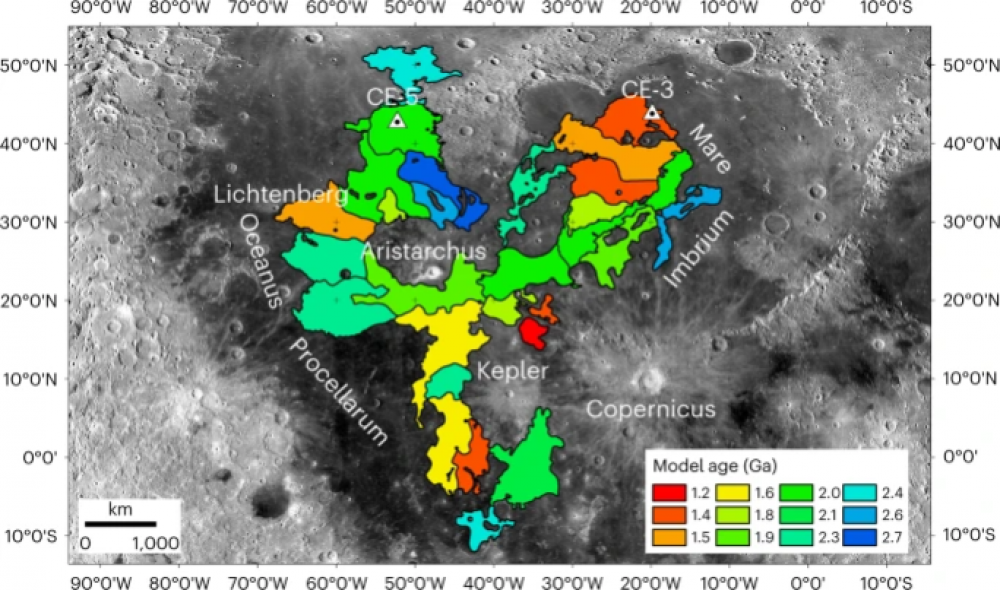Study of Dr. Michalski and his team on young mare volcanism in the Procellarum-KREEP-Terrane publiched on Nature Astronomy
Model ages of the young mare basalts determined through CSFD measurements using the new lunar chronology function (White triangles represent the CE-3 and CE-5 landing sites)
Recently published in Nature Astronomy, LSR Deputy Director Dr. Joe Michalski and several LSR members in his research team proposed that mare volcanism was still active around 2.0 Ga (billion years ago) in the Procellarum-KREEP-Terrane, and an additional heat source or mechanism may be needed compared to older basalts, based on returned Chang’e-5 samples.
Young lunar mare basalts are products of recent lunar volcanism. They are distributed mainly in the centre of the Procellarum-KREEP-Terrane, where volcanic activity may be extended by elevated heat-producing elements and volcanism was active until 1.2 Ga. Previous understanding was based solely on remote sensing techniques, lacking ground truth verification, as these young basalts were never investigated in situ until 2013 by Chang’e-3, and then sampled by Chang’e-5 in 2020.
Using the returned Chang’e-5 samples as ground truth, and examining Moon Mineralogy Mapper data globally, the team found the young basalts containing less abundant olivine (<10%) than previously suggested. The Chang’e-3 and Chang’e-5 basalts belong to a type of underrepresented basalt. Upon reassessing the model ages of the young basalts using the new chronology function calibrated by the Chang’e-5 samples, the team found that the young basalts have a trend of increasing TiO2 abundance with time. The young basalts with an age of around 2.0 Ga (billion years ago) are widespread in the Procellarum-KREEP-Terrane, including the Chang’e-5 unit. This indicates mare volcanism was still active at that time and an additional heat source or mechanism may be needed compared to older basalts. Young mare samples from Chang’e-5 and other potential sites are needed to constrain the late lunar thermal and volcanic history.

Mineral abundance and composition of the CE-5 sample. a) Mineral abundance of CE5C0400 based on Raman spectroscopy. b) Mineral abundance of CE5C0400 based on TIMA EDS analysis. c) Mineral abundance of the CE-5 sample summarized in Supplementary Table 1. d) Pyroxene type of the CE-5 regolith based on electron probe analysis. e) Olivine type of the CE-5 regolith based on electron probe analysis.

Model ages of mare basalts in PKT. The age of young basalts was determined in this study. The age of other basalts was determined by Hiesinger et al.
Visit https://www.clays.space/ to learn more about Dr. Michalski’s research.
The full article can be accessed here: https://www.nature.com/articles/s41550-022-01862-1


